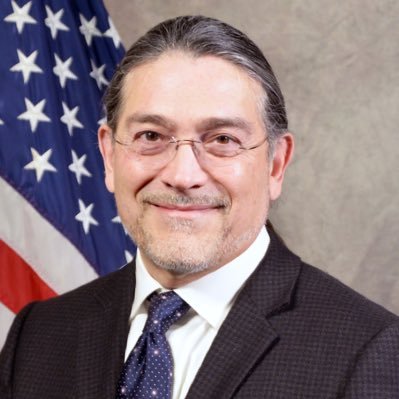The following announcement was taken from a blog by Robert Santos, director of the U.S. Census Bureau:

We at the U.S. Census Bureau build trust through our relationships. Trust is essential to effect cooperation, sharing and working together for a common good.
We at the U.S. Census Bureau build trust through our relationships. Trust is essential to effect cooperation, sharing and working together for a common good.It’s in this spirit that the Census Bureau announces an historic agreement with the Osage Nation to share information for the benefit of the Osage people. With this agreement, we now have a framework for the Osage Nation to share aggregated administrative data directly with the Census Bureau on topics like education, military service, household information, employment, health and wellness, housing, income and expenses. We are deeply honored to be able to cooperate and work together through this agreement.
We will use these aggregate data to discover new ways of improving the quality of our statistical products about the Osage Nation, while ensuring the protection and confidentiality of tribal member responses. With access to these records, we can improve our statistical products to provide a more accurate portrait of Indian Country. This is an important step in learning how our statistics can be improved with the aid of Tribal Nations.
We’re so committed to improving tribal statistics because American Indian and Alaska Native (AIAN) communities and Tribal Nations use Census Bureau statistics to understand tribes’ demographics, challenges, accomplishments and needs. Tribal statistical products are used widely for public health, economic planning and many other important purposes. Federal funding for tribal programs often relies on statistics developed by the Census Bureau for Tribal Nations. This agreement allows us to better serve the Osage Nation by creating more accurate and relevant statistical data products for their use in governance, resource management and planning.
Expanding the data sources we use is just one way we’re innovating to improve our coverage and quality. We’re researching how administrative data can be used to fill in data gaps, especially among historically undercounted populations. Gaining access to the Osage Nation’s data will help us explore new ways to boost data quality, reduce respondent burden, streamline our operations and save taxpayer dollars.
This agreement marks a significant milestone of collaboration and trust between the Census Bureau and Tribal Nations. Our efforts to build nation-to-nation relationships with Tribal Nations have spanned decades. We are proud of the progress we have made, while recognizing that we can benefit from more and stronger ties.
I’ve frequently met with tribal leaders since taking office. I always communicate that our work with Tribal Nations and the people of Indian Country is of the highest priority. Since 2022 we have made great strides in strengthening our nation-to-nation relationships – including the establishment of our continuous, on-the-ground Tribal Relations Program and engaging the AIAN community in designing new experimental statistical products.
I’m so pleased that our outreach and engagement efforts with Tribal Nations and the AIAN community are bearing fruit and paving the way for better data products that support partners across Indian Country. We remain deeply committed to the valuable partnerships we have built with various Tribal Nations over the years. I hope the Osage Nation agreement represents the first of many such sharing opportunities with other Tribal Nations.
As we advance the Census Bureau’s mission, we will continue our efforts to increase our engagement with Tribal Nations to better understand and mitigate unique barriers for Indian Country to access tribal data and resources. By working together, valuing diverse perspectives and committing ourselves to collaboration and excellence, we can produce more useful statistics about the AIAN population and better meet its needs.
Help us tell the stories that could save Native languages and food traditions
At a critical moment for Indian Country, Native News Online is embarking on our most ambitious reporting project yet: "Cultivating Culture," a three-year investigation into two forces shaping Native community survival—food sovereignty and language revitalization.
The devastating impact of COVID-19 accelerated the loss of Native elders and with them, irreplaceable cultural knowledge. Yet across tribal communities, innovative leaders are fighting back, reclaiming traditional food systems and breathing new life into Native languages. These aren't just cultural preservation efforts—they're powerful pathways to community health, healing, and resilience.
Our dedicated reporting team will spend three years documenting these stories through on-the-ground reporting in 18 tribal communities, producing over 200 in-depth stories, 18 podcast episodes, and multimedia content that amplifies Indigenous voices. We'll show policymakers, funders, and allies how cultural restoration directly impacts physical and mental wellness while celebrating successful models of sovereignty and self-determination.
This isn't corporate media parachuting into Indian Country for a quick story. This is sustained, relationship-based journalism by Native reporters who understand these communities. It's "Warrior Journalism"—fearless reporting that serves the 5.5 million readers who depend on us for news that mainstream media often ignores.
We need your help right now. While we've secured partial funding, we're still $450,000 short of our three-year budget. Our immediate goal is $25,000 this month to keep this critical work moving forward—funding reporter salaries, travel to remote communities, photography, and the deep reporting these stories deserve.
Every dollar directly supports Indigenous journalists telling Indigenous stories. Whether it's $5 or $50, your contribution ensures these vital narratives of resilience, innovation, and hope don't disappear into silence.
 The stakes couldn't be higher. Native languages are being lost at an alarming rate. Food insecurity plagues many tribal communities. But solutions are emerging, and these stories need to be told.
The stakes couldn't be higher. Native languages are being lost at an alarming rate. Food insecurity plagues many tribal communities. But solutions are emerging, and these stories need to be told.
Support independent Native journalism. Fund the stories that matter.
Levi Rickert (Potawatomi), Editor & Publisher
